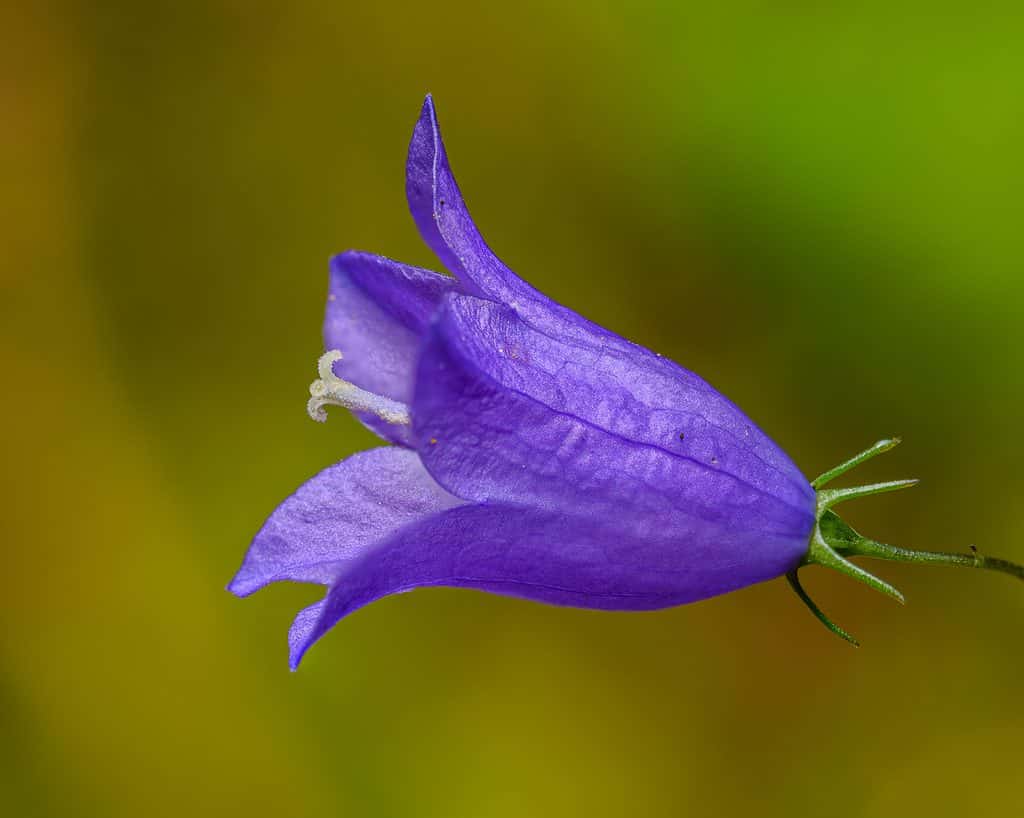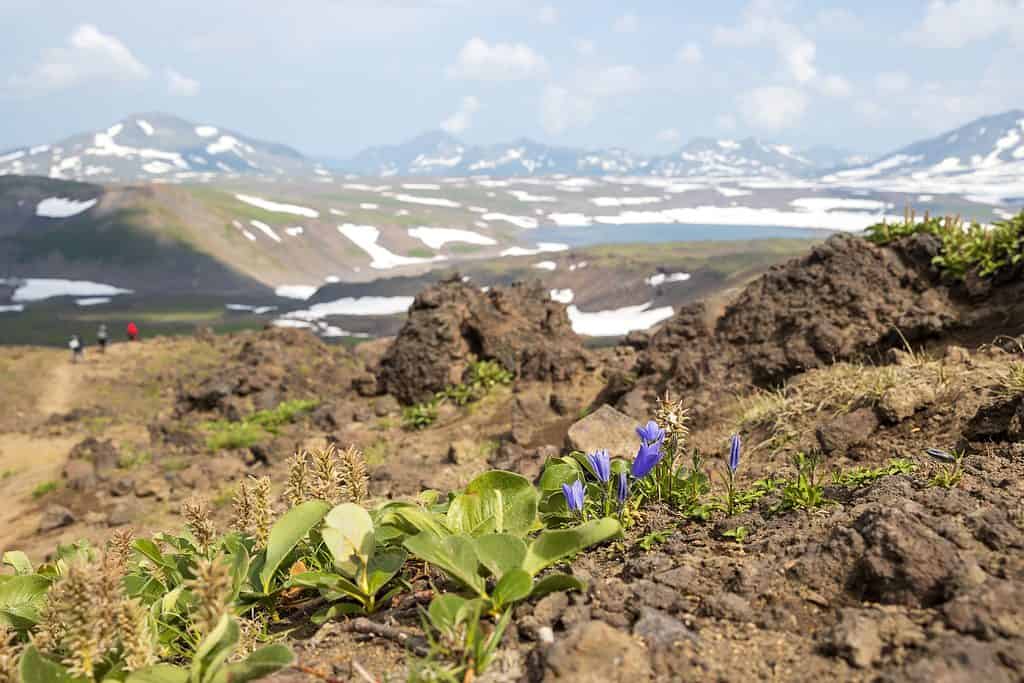Sweden is home to a variety of native wildflowers. If you’re wondering what the national flower of Sweden is, it is the Harebell. Read on to learn more about this unique flower.
Geography and Climate of Sweden
Sweden is a Scandinavian country located in Northern Europe. It is bordered by Finland and Norway to the north, the North Sea and Skagerrak Strait to the west, and Kattegat Strait and Denmark to the southwest. Sweden covers an area of 174,000 square miles, making it one of the largest countries in Europe.
The country has a varied landscape with mountains in its west along with vast forests covering the interior. Rolling hills dominate much of the central-eastern region. Sweden also has thousands of lakes and rivers, including Klarälven, Umeälven & Torneälven, that drain into the Baltic sea.
The coastal areas are generally milder in winter than inland regions, while the southwestern corner experiences the warmest temperatures in the summer. On the other hand, Sweden’s northernmost region has an Arctic climate, characterized by very cold temperatures and long hours of darkness during winter months. Despite its northerly latitude, Sweden enjoys relatively high temperatures in summer: most regions experience average summer highs between 68 and 77 degrees Fahrenheit. That allows for many plants and flowers to thrive.
The Harebell: National Flower of Sweden
In line with the democratic nature of the Swedish people, a nationwide vote decided which flower would win. The first vote determined the 10 top finalists, and the second vote was for the winner out of those ten. Over 81,000 people voted the harebell (campanula rotundifolia) as the national flower of Sweden!
Harebell is a perennial flowering plant. It has blue or purple-blue flowers that are cup or bell-shaped. The flowers are delicate and bloom in late summer and early fall. The flowers have five petals and pointy green sepals that protect the bud. The petals are each triangular in shape and curve outward, allowing the tiny seeds to fall to the ground.

Harebell is a perennial flowering plant with blue or purple-blue flowers that are cup- or bell-shaped. It’s the official flower of Sweden.
©Petr Ganaj/Shutterstock.com
Common Names and Legends
Campanula rotundifolia has quite a few common names. In Sweden, it is called the “small bluebell.” However, “harebell,” “bluebell of Scotland,” and “Scottish bluebell” are also widespread. Other common nicknames are “bellflower,” “lady’s thimble,” and “fairies’ thimble.” Less common names include “heath bells” and “dead men’s bells.” Very old names for the plant include “blawort”, “witch’s thimble,” and “witch’s bells,” but those have fallen out of favor.
It looks like a lot of magic is involved here, right? That’s true!
The harebell is thought to have been named after the hare, an animal that has a long history of association with witchcraft and magic. Legends say that witches had the ability to transform themselves into hares to trick people! As far as the connection of the flower with Scotland goes, there are many legends related to the harebell there. In Scotland, the harebell’s nickname is “Old Man’s Bell,” as it was believed that picking this flower would incur the wrath of the Devil himself! Moreover, fairies — not witches — were considered dangerous and treacherous and emissaries of the Devil. People believed that these creatures would kidnap travelers and children to spare their own kind from being sent to Hell. So, that’s better not to mess with harebells!
How to Grow Harebells
In the wild, harebell grows in mainland Europe, Scandinavia, and the French coastline of the Mediterranean sea. They can also grow wild in the southern part of Greenland, on the island of Novaya Zemlya, and in Iceland, but not in Canada.
Harebells prefer poor soil, so they can grow in dry cracks on walls, sand dunes, and cliffs. These tough cookies are not hard to grow! You can direct sow the seeds into the soil in the late fall, scratching them into the soil surface. Keep the soil moist until they germinate, and water sparingly after that. They do well in sandy or rocky areas and make a perfect rock garden flower.

Flowers like harebells can bloom even at Sweden’s high latitudes and in poor soils.
©Andrei Stepanov/Shutterstock.com
Do Animals Eat Harebells?
All parts of Campanula rotundifolia are edible and can be eaten by both humans and animals. Harebells are non-toxic to pets, and they are a fan favorite with bunnies and deer. They are attractive to bees, moths, and butterflies, who eat nectar and pollen. They aren’t quite nectar-rich enough for hummingbirds. The seeds are tiny and are eaten by small ground-feeding birds and rodents.
Other Native Plants and Flowers of Sweden
The people of Sweden have deep respect for the environment. They maintain a high quality of life through sustainable living practices and protect natural resources, including local flora and fauna, from pollution or destruction.
Among the plants that grow naturally in this Scandinavian country, there are tall trees like silver birch and Scots pine, as well as shrubs like meadowsweet, juniper, elderberry, and cranberry bush. Tall grasses grow on the rolling hills, like quaking grass and tufted hair grass. There are wildflowers such as marsh marigolds, ragged-robin, cowslip, yellow rattle, wood crane’s-bill, heath spotted orchid, common centaury, and field scabious. In addition to these species, Sweden also hosts many rarer flowers, such as the alpine gentian, daphne mezereon, and greater butterfly-orchid.
Up Next:
- Blue Flag with Yellow Cross: Sweden Flag History, Symbolism, and Meaning
- Meet The Amazing Swedish Vallhund!
- Spanish Bluebells vs. English Bluebells: What’s the Difference?
The photo featured at the top of this post is © Milan Vachal/Shutterstock.com
Thank you for reading! Have some feedback for us? Contact the AZ Animals editorial team.






